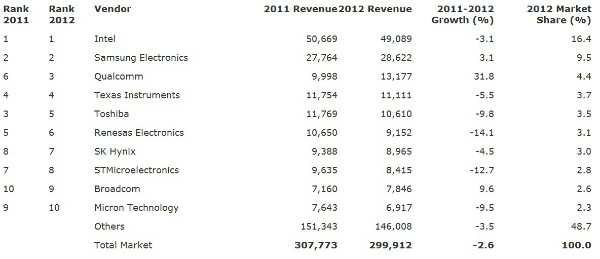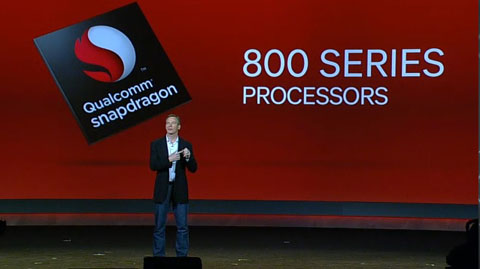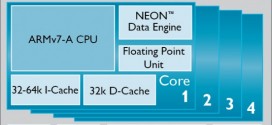In the past 3 years, Qualcomm has seen tremendous growth, and it’s now the 3rd largest chip maker by revenue, after Intel and Samsung.
Qualcomm’s path to success
Ever since the Nexus One came out with the 1 Ghz Snapdragon processor, Qualcomm has been getting a lot of free publicity for Snapdragon chips, and during 2010 they were even considered the reference point for comparison against other chips, thanks to HTC’s popular devices that were using it, too.
The next year, 2011, was a bit weak for them in terms of impressing people with their chips. Their dual cores chips were slower than Cortex A9-based chips, even though they had higher clock speeds. However, they experienced a lot of inertia in sales thanks to the previous year, which helped them gain a lot of new partners and customers interested in their chips for their devices.
In 2012, they had a break-out success with the Qualcomm Snapdragon S4 processor, in part because it was the first to move to 28nm (big mistake on Nvidia’s part to stay with a 40nm process throughout the year here), and also because they integrated LTE into it, which made it a huge success in US. In the end, both of these moves were focused on energy efficiency. Qualcomm took the risk and won big time, and they are now the 3rd largest chip maker by revenue.
Qualcomm Snapdragon’s dominance
What worries me though is that Nvidia keeps making mistake after mistake with their chips. Samsung also seems to have almost completely folded their chip business to Qualcomm, by not using Exynos chips in most of their devices (hope will change by the end of the year), and that leaves the window open for Qualcomm to completely dominate the mobile market in a couple of years.
Qualcomm cell phones already have a huge chunk of the mobile market now, and if everything else stays the same, I could see them going to 80%, the same share Intel has in PC’s. Intel dominating the PC market wasn’t so good for us in the end, because they charge very high prices for their chips. Neither OEM’s and consumers should want Qualcomm to turn into another Intel. That’s why it’s so important for Samsung to focus back on its Exynos chips for future devices, and for Nvidia to get it right with the Kepler-based Tegra 5 (Tegra Logan), and the poorly received Tegra 4 and other Nvidia Tegra 3 devices, as well as with the future Tegra Stark (Tegra 6).
 TechDomino
TechDomino




